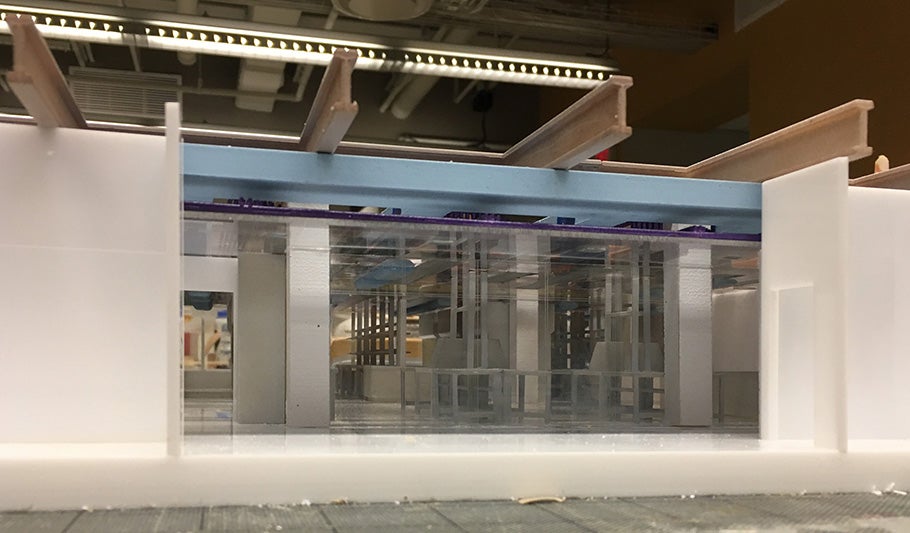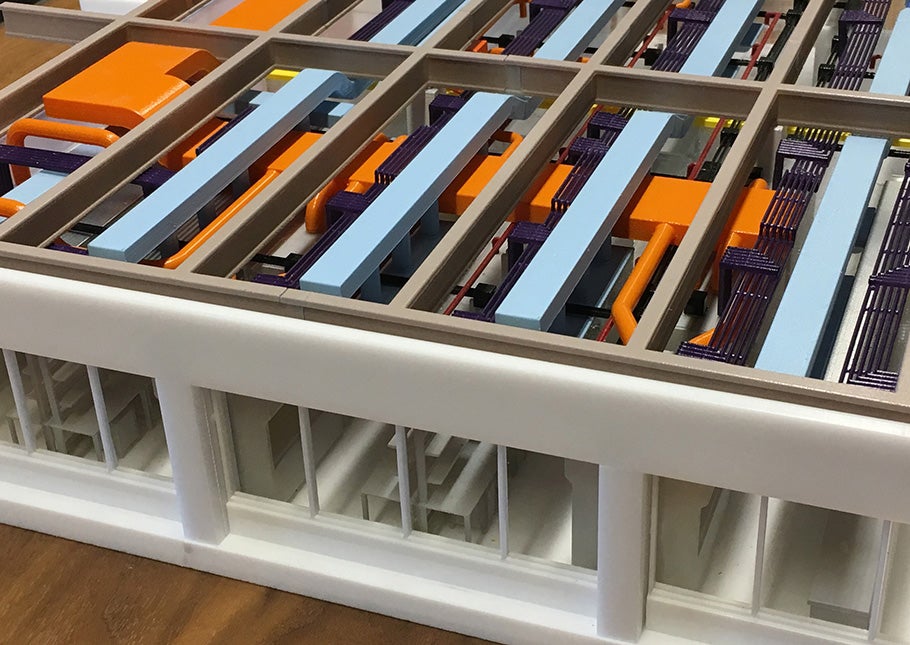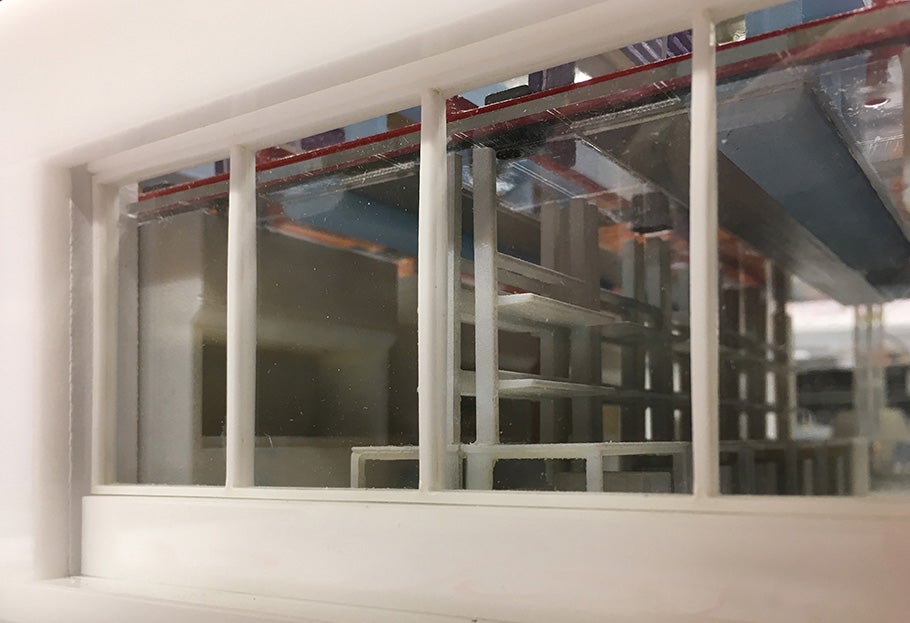Modeling Elevates Engineering Design
Modeling is often used to study the architecture of a building or a campus throughout the design of a project to help inform good decisions and elevate the level of design. When modeling is applied to engineering systems, the same benefits can be realized by both our project teams and clients.
When designing highly integrated facilities in the education, science and technology and healthcare markets, the topic of floor-to-floor (FTF) heights arises in early project phases. When buildings include laboratories, oftentimes, the FTF height is set by the laboratory with the highest density of fume hoods. In healthcare projects, operating rooms can drive similar conversations. The need for greater FTF heights in these areas is driven primarily by the large volume of air that needs to be supplied and exhausted from these spaces.

Likewise, other engineering systems in these areas impact the FTF height:
- Increased electrical consumption, which increases the number and size of conduits
- The need for plumbing services (NG, vacuum, DI, etc.) increases plumbing piping
- Intelligent building controls and smart equipment drive up low-voltage infrastructure
- Greater structural support of the building load in these areas increases the size of structural members
All of these systems need to coexist in the space between the ceiling and the floor deck above. The larger and more complex the system, the greater the impact on the FTF height.
In an effort to better understand these impacts, our engineers recently utilized our modeling studio to fabricate a scaled model of the engineering systems on a recent laboratory project at a scale of ¼ inch to 1 foot.

By using a bold color palette to highlight each major system, the inter-relationship between the systems was clearly identifiable; clearances for code compliance and maintenance were better understood; and scheduling of construction activities became more obvious.
In short, by generating a physical model, the engineers, architects and client were able to study the impacts to operations, maintenance and construction in more meaningful ways than other techniques such as BIM or virtual reality could offer.


